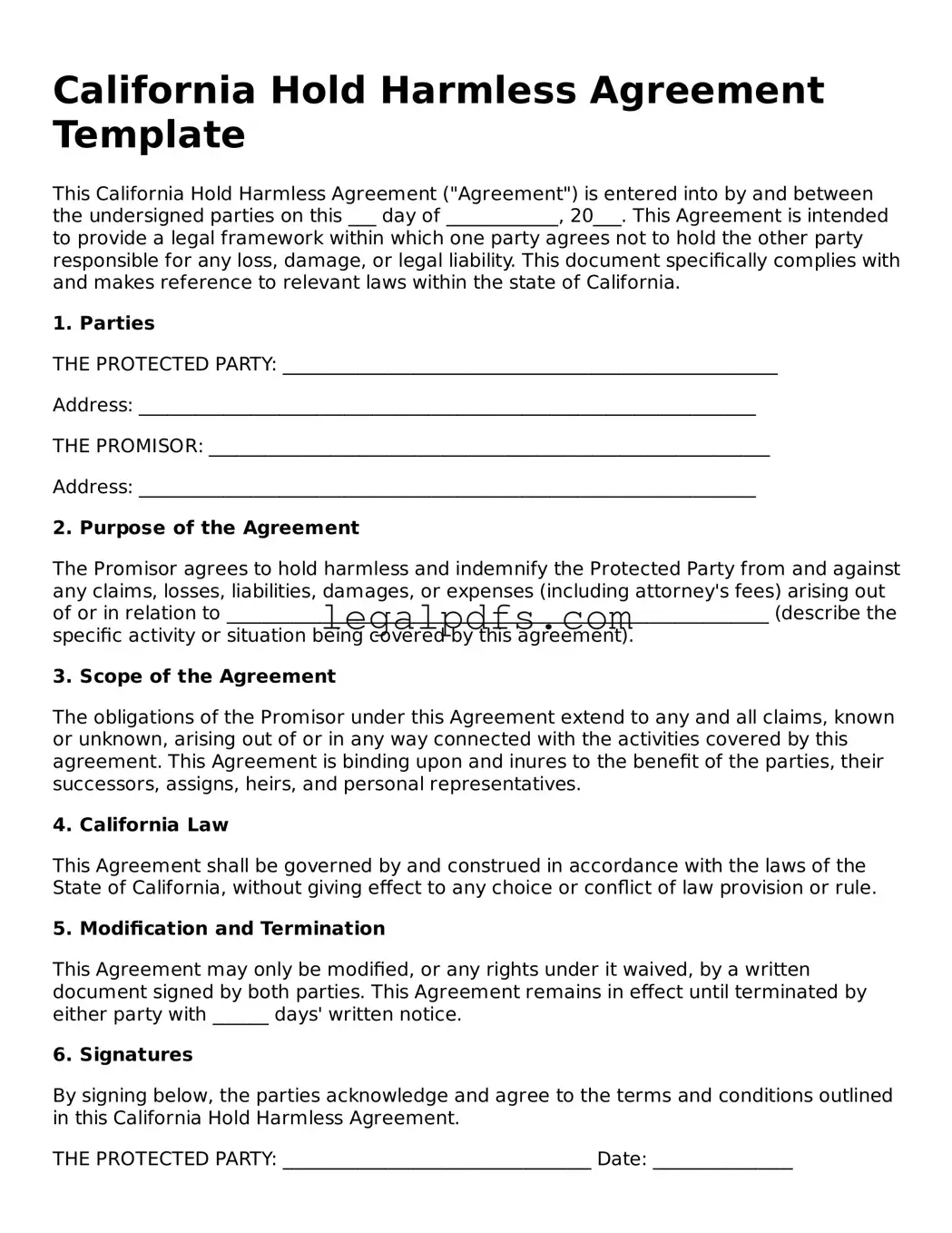California Hold Harmless Agreement Template
This California Hold Harmless Agreement ("Agreement") is entered into by and between the undersigned parties on this ___ day of ____________, 20___. This Agreement is intended to provide a legal framework within which one party agrees not to hold the other party responsible for any loss, damage, or legal liability. This document specifically complies with and makes reference to relevant laws within the state of California.
1. Parties
THE PROTECTED PARTY: _____________________________________________________
Address: __________________________________________________________________
THE PROMISOR: ____________________________________________________________
Address: __________________________________________________________________
2. Purpose of the Agreement
The Promisor agrees to hold harmless and indemnify the Protected Party from and against any claims, losses, liabilities, damages, or expenses (including attorney's fees) arising out of or in relation to __________________________________________________________ (describe the specific activity or situation being covered by this agreement).
3. Scope of the Agreement
The obligations of the Promisor under this Agreement extend to any and all claims, known or unknown, arising out of or in any way connected with the activities covered by this agreement. This Agreement is binding upon and inures to the benefit of the parties, their successors, assigns, heirs, and personal representatives.
4. California Law
This Agreement shall be governed by and construed in accordance with the laws of the State of California, without giving effect to any choice or conflict of law provision or rule.
5. Modification and Termination
This Agreement may only be modified, or any rights under it waived, by a written document signed by both parties. This Agreement remains in effect until terminated by either party with ______ days' written notice.
6. Signatures
By signing below, the parties acknowledge and agree to the terms and conditions outlined in this California Hold Harmless Agreement.
THE PROTECTED PARTY: _________________________________ Date: _______________
THE PROMISOR: ________________________________________ Date: _______________
This document was drafted to be comprehensive and to provide clear guidance within the plan framework provided by California law. For additional legal advice, consulting a lawyer familiar with California state laws and specific circumstances of the agreement is recommended.
